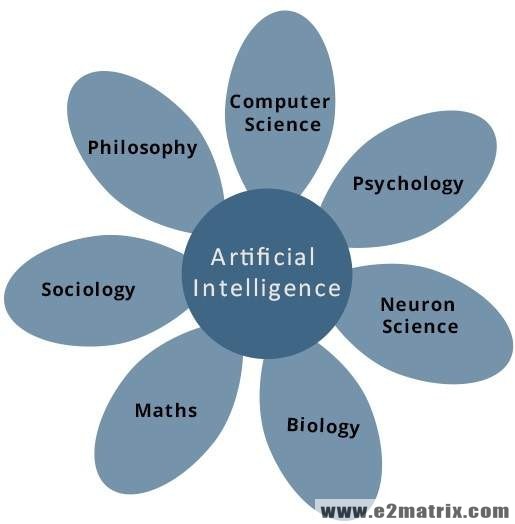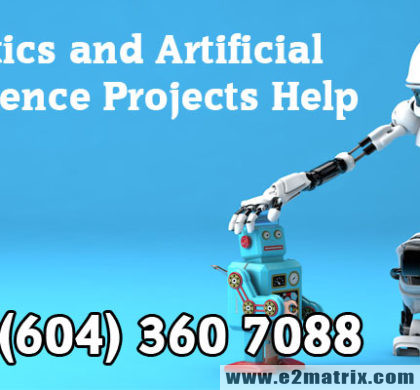Artificial Intelligence Thesis Topics, Research Guidance & thesis help

by blog_admin
“The engineering and science of building intelligent machines, mainly intelligent computer programs”. Artificial Intelligence is a way of making a computer-controlled robot, a computer or a software think intelligently, in the same way the intelligent humans think. If you want to do research work on Artificial Intelligence then our experts provides you best Artificial Intelligence thesis help.
Artificial Intelligence thesis help is skilled by examine how the human brain thinks, and how humans decide, learn, and work while trying to solve a problem, and then using the outcomes of Artificial Intelligence thesis help as a basis of developing intelligent software and systems.
Philosophy of Artificial Intelligence Research Guidance
While abusing the intensity of the PC frameworks, the interest of human, lead him to ponder, “Can a machine think and carry on like people do?”
Along these lines, the advancement of Artificial Intelligence began with the expectation of making comparable knowledge in machines that we find and respect high in people.
What Contributes to Artificial Intelligence Consultant?
Artificial intelligence is a technology and science based on disciplines like Biology, Computer Science, Psychology, Mathematics, Linguistics and Engineering. A major trust of AI is in the development of computer functions associated with human intelligence, like learning, reasoning and problem solving.
Objectives of Artificial Intelligence Thesis help: There are three types of objectives of Artificial Intelligence Thesis help
Task oriented Studies: The analysis and development of learning system is to enhance the performance of predetermined set of tasks.
Theoretical Analysis: The theoretical exploration of space of possible learning algorithms and methods independent of application domain.
Cognitive Simulation: The computer simulation and investigation of human learning processes.
For the most part when individuals catch wind of Artificial Intelligence Thesis Assistance they frequently liken it to Machine Learning and Deep Learning, yet they are only two of the numerous subtopics in Artificial Intelligence Research Guidance inquire about. These two are apparently best topics in the present Artificial Intelligence world however there are numerous different subtopics that have increased critical footing in the Artificial Intelligence people group for their applications and the future potential. In this article we will talk about a portion of the hot subtopics in the Artificial Intelligence investigate, a significant number of these themes are interlinked and gone under expansive umbrella of man-made reasoning.
Learning: Machine learning, a fundamental concept of Artificial Intelligence Thesis help research since the field’s inception, is the study of computer algorithms that improve automatically through experience.
Unsupervised learning is the ability to find patterns in a stream of input. Supervised learning includes both classification and numerical regression. Classification is used to determine what category something belongs in, after seeing a number of examples of things from several categories. Regression is the attempt to produce a function that describes the relationship between inputs and outputs and predicts how the outputs should change as the inputs change.
Natural Language Processing: Natural language processing (NLP) enables machines to peruse and comprehend human dialect. An adequately intense characteristic dialect handling framework would empower common dialect UIs and the securing of information straightforwardly from human-composed sources, for example, news wire writings.
Perception: Machine discernment is the capacity to utilize contribution from sensors, (for example, cameras (noticeable range or infrared), mouthpieces, remote signs, and dynamic Lidia, sonar, radar, and material sensors) to reason parts of the world. Applications incorporate discourse acknowledgment, facial acknowledgment, and protest recognition. Computer vision is the capacity to investigate visual information.
Social Intelligence: Moravia’s paradox can be stretched out to numerous types of social intelligence. Distributed multi-operator coordination of self-ruling vehicles remains a troublesome issue. Full of feeling figuring is an interdisciplinary umbrella that involves frameworks which perceive, decipher, process, or recreate human affects. Moderate victories identified with emotional registering incorporate literary slant investigation and, all the more as of late, multi modal influence examination), wherein AI orders the influences shown by a recorded subject
What is Artificial Intelligence Technique?
In the real world, the knowledge has some unwelcome properties that used in Artificial Intelligence thesis Topics −
- Its volume is huge, next to unimaginable.
- It is not well-organized or well-formatted.
- It keeps changing constantly.
Artificial Intelligence thesis Topics Technique is a manner to organize and use the knowledge efficiently in such a way that −
- It should be perceivable by the people who provide it.
- It should be easily modifiable to correct errors.
- It should be useful in many situations though it is incomplete or inaccurate.
Artificial Intelligence thesis Topics techniques elevate the speed of execution of the complex program it is equipped with.
Applications of Artificial Intelligence Thesis Topics
Artificial Intelligence thesis Topics has been ruling in different fields like −
- Gaming− Artificial Intelligence thesis list plays vital role in strategic games like poker, chess, tic-tac-toe etc., where machine is able to think large quantity of possible positions depend on heuristic knowledge.
- Natural Language Processing− It is possible to interact with the computer that understands natural language spoken by humans.
- Expert Systems− There are various applications which integrate software, machine and special information to impart advising and reasoning. They provide explanation and advice to the users.
- Vision Systems− These systems interpret, understand and comprehend visual input on the computer. For example,
- A spying aeroplane takes photographs, that are used to figure out spatial information or map of the areas.
- Doctors use clinical expert system to diagnose the patient.
- Police use computer software that can recognize the face of criminal with the stored portrait made by forensic artist.
- Speech Recognition− Some intelligent systems are capable of hearing and comprehending the language in terms of sentences and their meanings while a human talks to it. It can handle different accents, slang words, noise in the background, change in human’s noise due to cold, etc.
- Handwriting Recognition− The handwriting recognition software reads the text written on paper by a pen or on screen by a stylus. It can recognize the shapes of the letters and convert it into editable text.
- Intelligent Robots− Robots are able to perform the tasks given by a human. They have sensors to detect physical data from the real world such as light, heat, temperature, movement, sound, bump, and pressure. They have efficient processors, multiple sensors and huge memory, to exhibit intelligence. In addition, they are capable of learning from their mistakes and they can adapt to the new environment.
Approaches in Artificial Intelligence thesis Implementation
Students looking for hot topics in artificial intelligence for thesis and research can work on any one of the following areas in artificial intelligence. Here is the list of interesting areas in artificial intelligence for thesis and research:
- Fuzzy Logic
- Artificial Neural Networks
- Robotics
- Machine Learning
- Sentimental Analysis
Fuzzy Logic
Fuzzy Logic imitates the manner in which human settle on choices including conceivable outcomes of YES/NO or True/False. It is an idea of thinking like human thinking. In this framework, a consistent square takes an information and produces a distinct yield as True or False. The fuzzy framework chips away at conceivable outcomes. It has four principle parts:
- Fuzzification of Module
- Knowledge Base
- Inference Engine
- Module of Defuzzification
Artificial Neural Networks
It is amazingly, one more slanting exploration field of AI. Its model based on computer, function and structure for a newral network of biological. It works like human brain. A natural neural system comprises of nerve cells known as neurons associated with other nerve cells through axons. One neuron can convey to alternate neurons. In counterfeit neural system or ANN, there are various hubs that speak to neurons. These hubs are associated with one another through connections similarly as neurons are associated through axons.Weight of connection is also mentioned. There are mainly two kinds of Artificial Neural Network topologies which are as follows:
- Feed forward ANN
- Feedback ANN
Robotics
Robotics is a part of computerized reasoning that arrangements with the making of shrewd and efficient operators known as robots. A robot is a counterfeit specialist that works in reality condition by seeing its environment. A robot can see by utilizing the idea of PC vision.There are different part of Robots:
- Actuators
- Sensors
- Electric Motors
- Power supply
- Muscle Wires
Machine Learning
This is the main application of AI. Machine learning is also a current topic for thesis and research of AI which is broadly believed that artificial intelligence and machine learning are similar kind of thing but thats not. There are mainly three different types of learning which are as follows:
- Supervised Learning
- Unsupervised Learning
- Reinforcement Learning
Sentiment Analysis
Sentiment Analysis is a procedure that estimates individuals’ perspective through text analysis, `Natural Language preparing, and linguistics. Mining of data procedure and methods are utilized for this reason to concentrate and catch information.
Biometrics
Biometrics is a technology used for identification and access control by identifying the physical and behavioral traits of an individual. It is additionally a decent research zone in computerized reasoning. The biometric identifiers are of two kinds ordered based on physiological qualities and conduct attributes. Physiological attributes incorporate fingerprints, facial acknowledgment, voice acknowledgment while social qualities incorporate strolling and different signals.
Recommended Posts

Computer Vision Projects Help in Surrey | Vancouver | Burnaby BC
22 Mar 2019 - Computer Vision, Matlab, Tech Update



